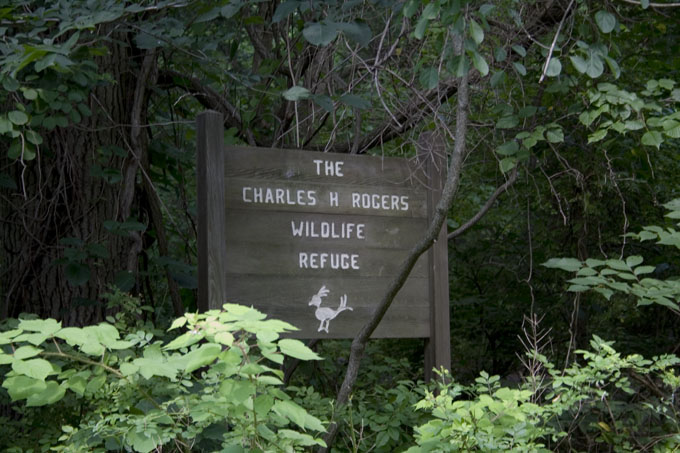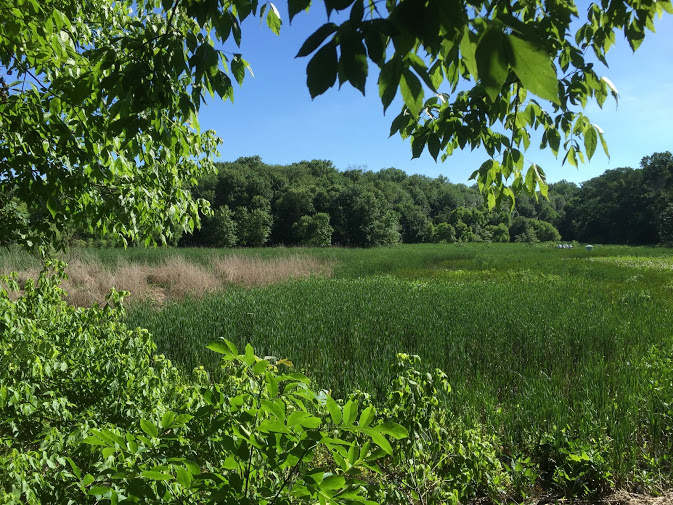Visit the Charles H. Rogers Wildlife Refuge

The Rogers Wildlife Refuge is located in Princeton, New Jersey, bordering the Institute for Advanced Study woods. The Refuge was created in 1968 and was originally called the Princeton Wildlife Refuge. It was renamed to honor Charles H. Rogers, a Princeton University ornithologist who played a key role in establishing the sanctuary.

The focal point of the refuge is the open marsh, which is maintained by natural water drainage, and at dry periods by pumping water from the Stony Brook. You can see the marsh from the two observation towers, which give a broad view of the main body of the marsh. Close by are structures for colonies of purple martins and individual boxes for tree swallows. Muskrat houses create numerous small hummocks in the marsh. A variety of frogs and turtles also live here. In early spring the peepers set up a shrill chorus; later bullfrogs will be heard. When the sun is hot, turtles lie along the logs. There are many kinds of snakes in the area.
The refuge’s diversity of habitat attracts a corresponding diversity of mammals, including whitetail deer, striped skunk, opossum, raccoon, eastern cottontail, groundhog, red and gray squirrel and mink.
Equally diverse is the plant life. The most notable trees are hardwoods in the Institute woods edging the marsh: many varieties of oak, tulip poplar, black gum, sweet gum, beech. In the spring yellow trout lilies, violets and spring beauties carpet the woodlands and yellow iris blooms in pools at the edge of the marsh. In summertime arrowhead, pickerel weed and pond lilies flower in the marsh. Swamp milkweed, boneset, joe-pyeweed and ironweed form a pattern of mauve and purple beside many of the walks. Come fall, the red osier dogwood is in fruit, along with elderberries, rose hips and the tall brown spikes of the cattails.
The tract is a nesting ground for more than 90 species of birds and scores of others pass through the refuge; over the years more than 190 species have been recorded here. At one time there was perhaps no better place of comparable size to find warblers, with up to 30 different kinds of warblers possible the first three weeks of May; declining populations have made these birds harder to see, but still many bird watchers and nature groups visit the area every spring.
The combined marsh and woods of the Rogers Refuge and the Institute Woods are critical to the local environment. Marshes act as “safety valves” during peak rains; help maintain the water table; provide a highly productive habitat and food supply for fish, waterfowl, animals and crustacea; and serve as a collection point for high-ground nutritional runoff. Preservation of this habitat is particularly worthwhile because wetlands are disappearing at an alarming rate.
For more information or to get involved, send a message to PrincetonRogersRefuge@gmail.com
Thank you for visiting.